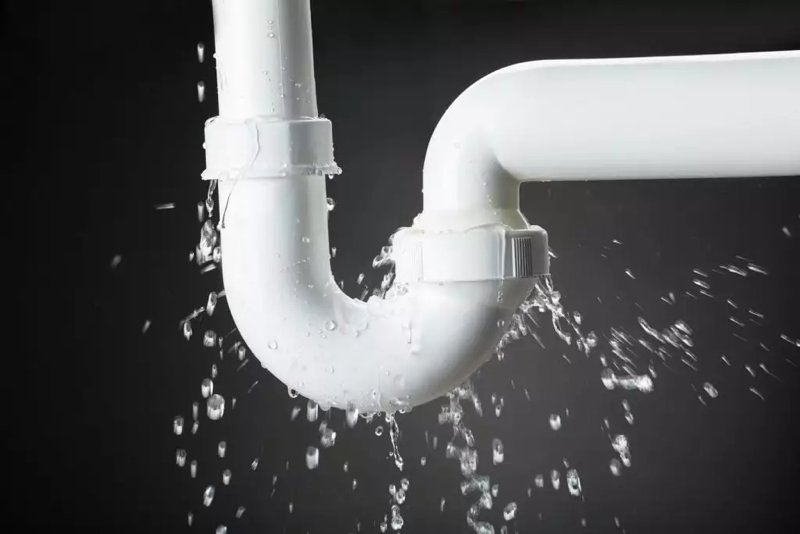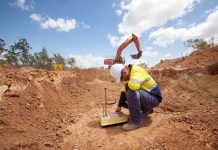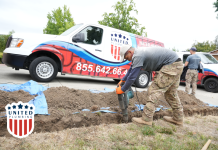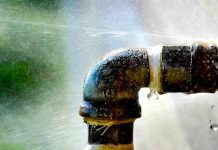Introduction
Plumbing issues can be a homeowner’s worst nightmare, causing inconvenience, water damage, and expensive repairs. While it’s essential to maintain the entire plumbing system, the drainage system is often neglected. A properly designed and maintained drainage system is crucial for preventing plumbing problems and preserving the integrity of your property. This article will delve into the significance of reliable drainage systems and their substantial role in preventing plumbing problems.
1. Understanding Drainage Systems: They are pipes and channels that carry wastewater away from buildings and other structures. The main objective of these systems is to facilitate the smooth flow of water and prevent unwanted pooling in specific areas.
Drainage systems have two primary components: surface water drainage and foul water drainage systems. The surface water drainage system deals with rainwater, which can cause flooding and damage your property if not adequately managed. This system typically includes gutters, downspouts, and surface drains. On the other hand, the foul water drainage system is responsible for removing wastewater from sinks, toilets, showers, and other household appliances.
2. Importance of Quality Drainage Systems
a. Prevents Water Damage: A well-designed drainage system directs rainwater and wastewater away from your property. Inadequate drainage can pool water around your home’s foundation, causing moisture, leaks, and potential structural harm. Standing water can also damage landscaping and attract pests, creating an unhealthy living environment.
b. Mitigates Flooding Risks: One of the most significant threats to any property is flooding. A high-quality drainage system helps manage heavy rainfall and prevents flooding in basements and low-lying areas. Proper grading and well-maintained drains keep excess water away, safeguarding your home and its possessions.
c. Preserves Landscape and Hardscape: Landscaping and hardscaping elements, such as lawns, gardens, and pavements, add value to your property. A reliable drainage system prevents soil erosion, waterlogging, and the formation of puddles, preserving the beauty and longevity of your outdoor spaces.
d. Extends the Life of Plumbing Fixtures: Effective drainage systems prevent blockages and clogs, which can cause strain on plumbing fixtures and pipes. By ensuring a smooth flow of wastewater, high-quality drainage reduces the risk of pipe bursts, leaks, and corrosion, thus extending the life of your plumbing system.

a. Gutters and Downspouts: Properly maintained gutters and downspouts play a crucial role in diverting rainwater away from the roof and foundation. It is essential to regularly clean gutters and ensure that downspouts direct water at least six feet away from the house to safeguard against potential foundation problems.
b. Grates and Covers: Surface drains, grates, and covers are crucial in removing excess rainwater from paved areas and preventing debris from entering the drainage system. Regularly clean and inspect these components to ensure they function optimally.
c. French Drains: French drains are perforated pipes buried in gravel-filled trenches. They collect and redirect groundwater away from sensitive areas, preventing water from seeping into basements or crawl spaces.
d. Sump Pump: Incorporating a sump pump is a valuable upgrade for properties with a high water table or susceptible to flooding. It efficiently removes accumulated water from basements, crawl spaces, and low-lying areas.
e. Septic Systems: Septic systems are vital for wastewater treatment and disposal in areas without access to a public sewer system. Consistent maintenance and timely septic tank pumping are crucial in avoiding system failure and costly repairs.
4. Tips for Maintaining a Quality Drainage System
a. Regular Inspections: Arrange regular inspections of your drainage system to detect potential damage or blockages. Addressing issues promptly can prevent major problems in the future.
b. Cleanliness and Debris Removal: Keep drains, gutters, and grates clear of debris, leaves, and dirt. Regularly clean these components to ensure smooth water flow.
c. Proper Landscaping: Incorporate appropriate grading in your landscape design to ensure proper water flow away from the foundation. Use landscaping features like swales and berms to manage water runoff.
d. Professional Assistance: Consider seeking professional advice when designing or modifying your drainage system. A qualified plumber or landscape architect can help you design an efficient system tailored to your property’s needs.
5. Implement Rainwater Harvesting: While managing rainwater is essential to prevent flooding, it’s also a valuable resource. You might want to contemplate installing a rainwater harvesting system that gathers and stores rainwater from your roof for future purposes. This eco-friendly practice reduces the burden on drainage systems and provides a sustainable water supply for tasks like watering plants and washing outdoor areas.
6. Use Permeable Paving: Traditional concrete or asphalt surfaces contribute to water runoff, overburdening drainage systems. Opt for permeable paving materials, such as permeable concrete or porous pavers, which enable rainwater to pass through, encouraging natural infiltration into the soil. Incorporating porous surfaces in your driveway, walkways, or patio can reduce runoff and promote groundwater recharge.
7. Educate Household Members: Plumbing issues often arise from misuse and improper waste disposal. Educate all household members about responsible water usage and the importance of not flushing non-biodegradable items down the toilet or pouring grease and oils down the sink. A collective effort to practice good plumbing habits can significantly reduce the risk of clogs and blockages in your drainage system.
Conclusion: A well-designed and maintained drainage system is critical in safeguarding your property from water-related damages and plumbing issues. As we have explored in this blog, quality drainage systems offer numerous benefits, including preventing water damage, mitigating flooding risks, preserving landscapes, and extending the life of plumbing fixtures. Neglecting the drainage system can lead to a range of problems that not only affect the structural integrity of your home but also create inconvenience and financial burdens.
To guarantee the efficiency of your drainage system, it’s crucial to consider a few essential factors. Regular inspections help detect potential problems before they escalate into significant issues. Cleaning gutters, grates, and downspouts of debris routinely will guarantee unobstructed water flow and prevent blockages.
Moreover, working with professionals during the design or modification phase of your drainage system ensures that it is customized to meet the specific needs of your property.
In addition to the functional aspects, there are environmental considerations to consider. Rainwater harvesting provides an eco-friendly way to manage rainwater runoff while offering a sustainable water supply for various non-potable uses. By capturing and storing rainwater, you alleviate pressure on drainage systems, contribute to water conservation efforts, and reduce your ecological footprint.
Furthermore, integrating permeable paving materials into your outdoor spaces enhances aesthetics and promotes responsible stormwater management. These materials allow rainwater to infiltrate the ground, mitigating runoff and safeguarding against soil erosion. Permeable paving is a practical solution to combat urban runoff and helps recharge groundwater, contributing positively to the local hydrological cycle.











